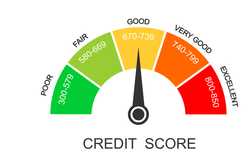- More control over the jobs you take.
- More flexibility in your work location.
- Set your own schedule.
- Follow your passion.
What Does Self-Employed Mean?


Our evaluations and opinions are not influenced by our advertising relationships, but we may earn a commission from our partners’ links. This content is created by TIME Stamped, under TIME’s direction and produced in accordance with TIME’s editorial guidelines and overseen by TIME’s editorial staff. Learn more about it.
Are you self-employed? You might be, even if you don’t own or run an official business. Self-employment means you work for yourself, and it comes in many forms. The category has significant ramifications, especially for your taxes. So it’s important to know if you have that status.
According to the Internal Revenue Service (IRS), you are self-employed if you:
Self-employment has many benefits. You call the shots, take the jobs you want, set your own schedule, and can follow your dreams. However, self-employment comes with many downsides as well. Self-employed people have more complicated taxation. Being your own boss often means long hours and less stability in your income and workload. Here’s a guide to help you determine if self-employment is right for you.
If you work for yourself instead of working for an employer, you are self-employed. You are also responsible for paying your own taxes. Self-employment covers a vast number of jobs in the United States. The rise of the gig economy—with jobs such as ridesharing and delivery services—has led to an increase in self-employment in recent years.
Self-employment comes in many forms. Independent contractors—also known as freelancers or gig-economy workers, depending on the situation—are people who are paid to do specific jobs. They are not employees of the hiring person or organization.
You may also be self-employed as a business owner. A sole proprietorship is a type of unincorporated business in which one person works alone. A partnership is a type of business organization that allows two or more people to work together. Your business could also be organized as a single-member LLC or multi-member LLC.
Self-employment comes with many pros, but there are also cons to being your own boss. Here are some of the major pros and cons.
There are many advantages to being self-employed. Here are some of the top reasons to choose self-employment.
As your own boss, you have the ability to selectively take jobs that you feel passionate about and avoid those that make you feel uncomfortable or unhappy. You are able to better organize your own working environment.
You have more flexibility in choosing your work location. If you can do your work remotely, you don’t have to commute to an office every day and can live in a wider range of locations. If you love traveling, you may be able to do your work on the go. If your job requires travel to various work sites, you can organize your schedule to best suit your own needs.
A major benefit of self-employment is the ability to complete your work at your own pace. If you need to take a midday break to volunteer at your kid’s school, you can. If you’re a night owl, you can do your work in the evenings. If you want to take a couple of weeks to travel, you can do it without having to request time off and wait for approval.
One of the biggest benefits of self-employment is the ability to do work that you feel passionate about. If you have a hobby or interest that you would like to turn into a business, you can work to make money doing something you love.
Self-employment also comes with some disadvantages. Consider these downsides before taking the plunge.
Self-employed workers are responsible for paying their own taxes. When you work for an employer, your employer automatically withholds your income tax and Federal Insurance Contributions Act (FICA) taxes from your wages. At the end of the year, you receive a Form W-2, Wage and Tax Statement, from your employer detailing your annual income and taxes paid throughout the year. When you are self-employed, you are responsible for paying these taxes yourself via quarterly estimated tax payments.
Self-employment makes qualifying for a loan more difficult as well. Typically, to qualify for a mortgage loan, you will need income documentation in the form of multiple years’ income tax returns and pay stubs from your employer. As a self-employed person, you do not have an employer or the Form W-2 to substantiate a stable income.
Some lenders, such as Quontic, offer non-traditional home mortgage loans for self-employed business owners, independent contractors, and gig workers. These loans allow you to provide alternative income documentation for your fluctuating self-employment income.
Especially in the beginning, self-employed people often work much longer than 40 hours per week to get the business off the ground. Additionally, there’s no paid time off. If you aren’t working, you aren’t getting paid.
Self-employment doesn’t come with a guaranteed workload the way working for an employer generally does. Due to the lack of predictability in your workload, busier times will bring in more money and slower times will bring in less money. You’ll need to be good at budgeting your inconsistent income if you have regularly recurring bills.
As a self-employed business owner, you’ll need to be prepared to track, report, and pay the taxes and fees required by your city, county, state, and the federal government. The various compliance items may include:
Taxes are more complicated if you’re self-employed. As described above, you are responsible for paying your own taxes in four quarterly payments. Additionally, there are extra forms that you will receive at tax time and additional schedules that need to accompany your Form 1040, U.S. Individual Income Tax Return.
If you are working as an independent contractor or sole proprietor, you may work for many different clients throughout the year. If you perform more than $600 for any one client, you should receive a Form 1099-NEC, Nonemployee Compensation, from them. At tax time, you report all of your income and expenses from these jobs on the Schedule C, Profit or Loss from Business, of your Form 1040.
You could also be organized as a single-member LLC. A single-member LLC is a “disregarded entity” in tax lingo. This means it is treated by the IRS as though it does not exist. The business pays taxes like a sole proprietorship, and the owner reports income and expenses on the Schedule C.
In a partnership, each partner shares the profit or loss from the business. A multi-member LLC typically pays taxes like a partnership, but it could elect to be taxed as a corporation. These are considered to be passthrough entities because the tax obligation is passed through from the business to the owners. The business does not pay taxes directly, but the owners include their share on their own personal tax returns. The partnership—or multi-member LLC taxed as a partnership—will provide the owners with a Schedule K-1, Partner’s Share of Income, Deductions, Credits, etc. The owners will use the information from the Schedule K-1 to report their own share of the income and expenses on the Schedule C.
Although self-employment taxation is complicated, there are tax benefits you can take advantage of when you work for yourself. Here are some of the more common tax deductions for the self-employed:
If you use your vehicle for ridesharing or delivery, you may be able to take the Section 179 deduction in the year you purchase and begin to use your vehicle for business. You can only take the Section 179 deduction if you use the vehicle more than 50% of the time for business, and only to the extent that you use the vehicle for business.
You can also deduct the standard mileage rate for business-related travel. The IRS set the standard mileage rate for 2024 at 67 cents per mile driven for business use. You can use a mileage tracking app to track your business versus personal use. You could also track the actual costs of using your vehicle for business, but that requires detailed documentation of all vehicle related expenses such as gas, repairs and maintenance, oil change, car insurance, etc.
The home office deduction has two options. You can choose the simplified option, in which you can take a $5 deduction per square foot of your home office space (up to a maximum of 300 square feet). The regular method is more complicated and requires detailed documentation of expenses for your home—electricity, gas, internet, phone, home insurance, etc. You would then need to multiply these expenses by the portion of your home that is made up by your home office. For example, you’d multiply all of your expenses by 10% if your home office is 160 square feet out of your 1,600 square foot home.
The qualified business income (QBI) deduction allows certain owners of sole proprietorships, partnerships, S corporations, and some trusts and estates to deduct up to 20% of their QBI plus 20% of qualified real estate investment trust (REIT) dividends and qualified publicly traded partnership (PTP) income.
You can deduct 50% of your self-employment tax (the employer-equivalent portion) when figuring your adjusted gross income for income tax purposes.
Self-employment may be exactly what you need to fulfill yourself as a hardworking go-getter. It can provide a fun and flexible work opportunity for the right person. Or it could drive you to the brink of exhaustion. You should ask yourself if you’re ready for the level of commitment it takes to be your own boss, manage your own deadlines, set your own schedule, and comply with government regulations.
Also, have a plan for your tax situation. It is always good to consult with a tax professional if you’re planning to go into business for yourself. You can work together to come up with strategies to minimize your tax bill.
You are self-employed if you work for yourself, rather than working for an employer. It encompasses a wide range of employment—from gig economy work to business ownership.
Being self-employed is not the same as being unemployed. If you are self-employed, you have a job working for yourself as a freelancer, independent contractor, or business owner. If you are unemployed, you currently have no job of any kind.
Being self-employed might mean you own a business, but it isn’t the only form of self-employment. You could also be self-employed as an independent contractor or freelancer in the gig economy. Anyone who works a 1099 rather than a W-2 job is also considered to be self-employed. At least partly. Some people are both employees and self employed.
The information presented here is created by TIME Stamped and overseen by TIME editorial staff. To learn more, see our About Us page.



